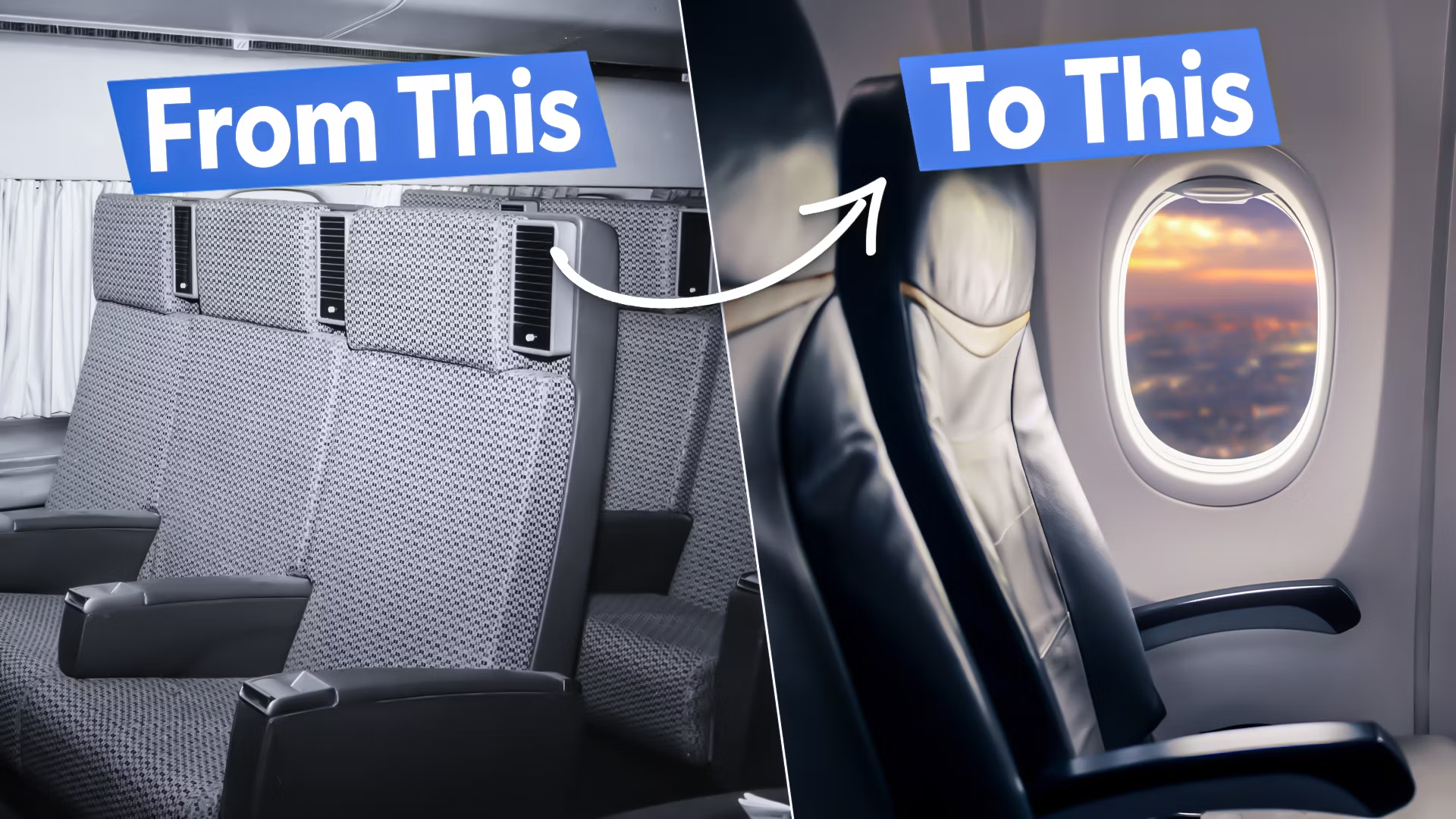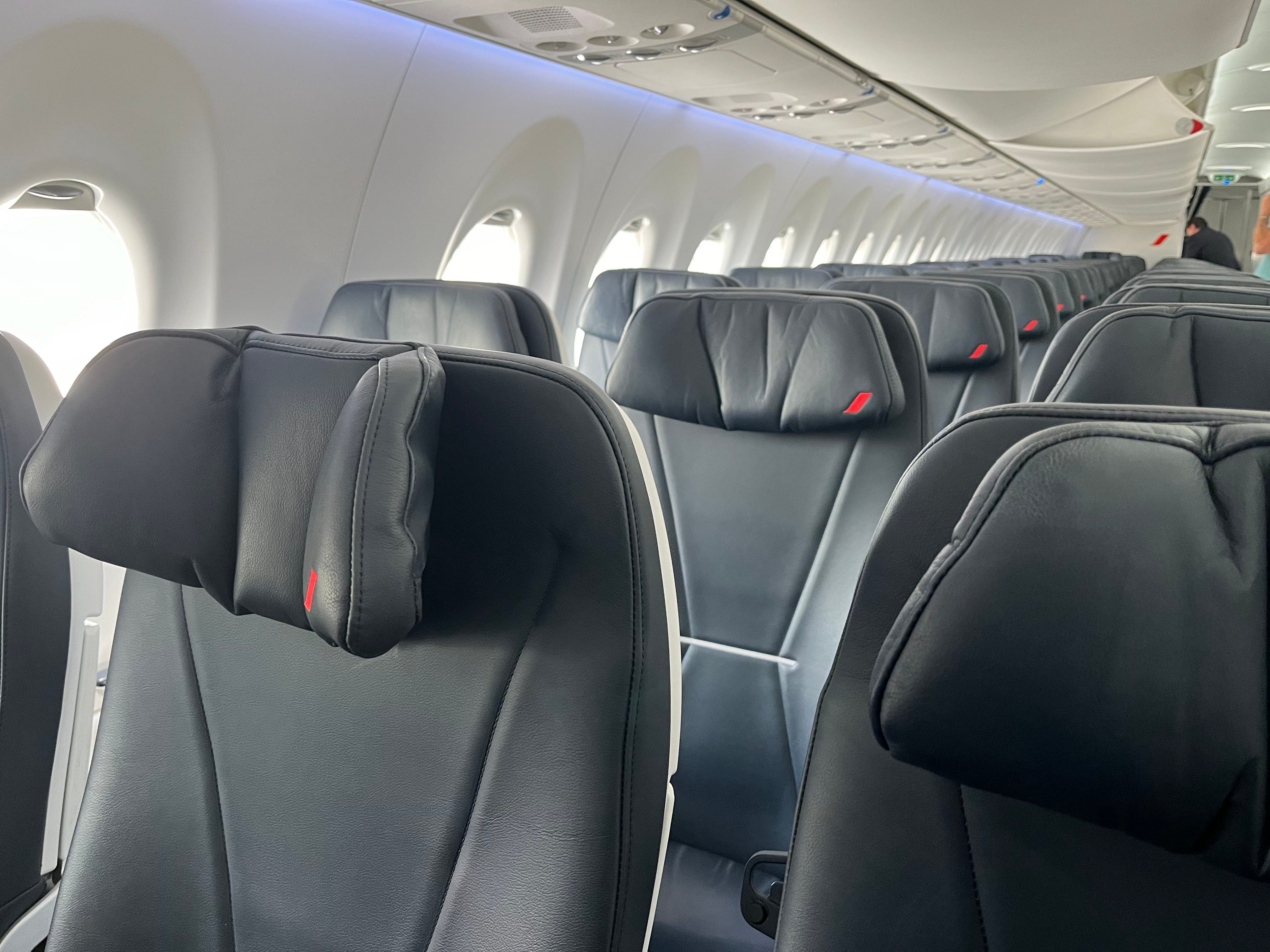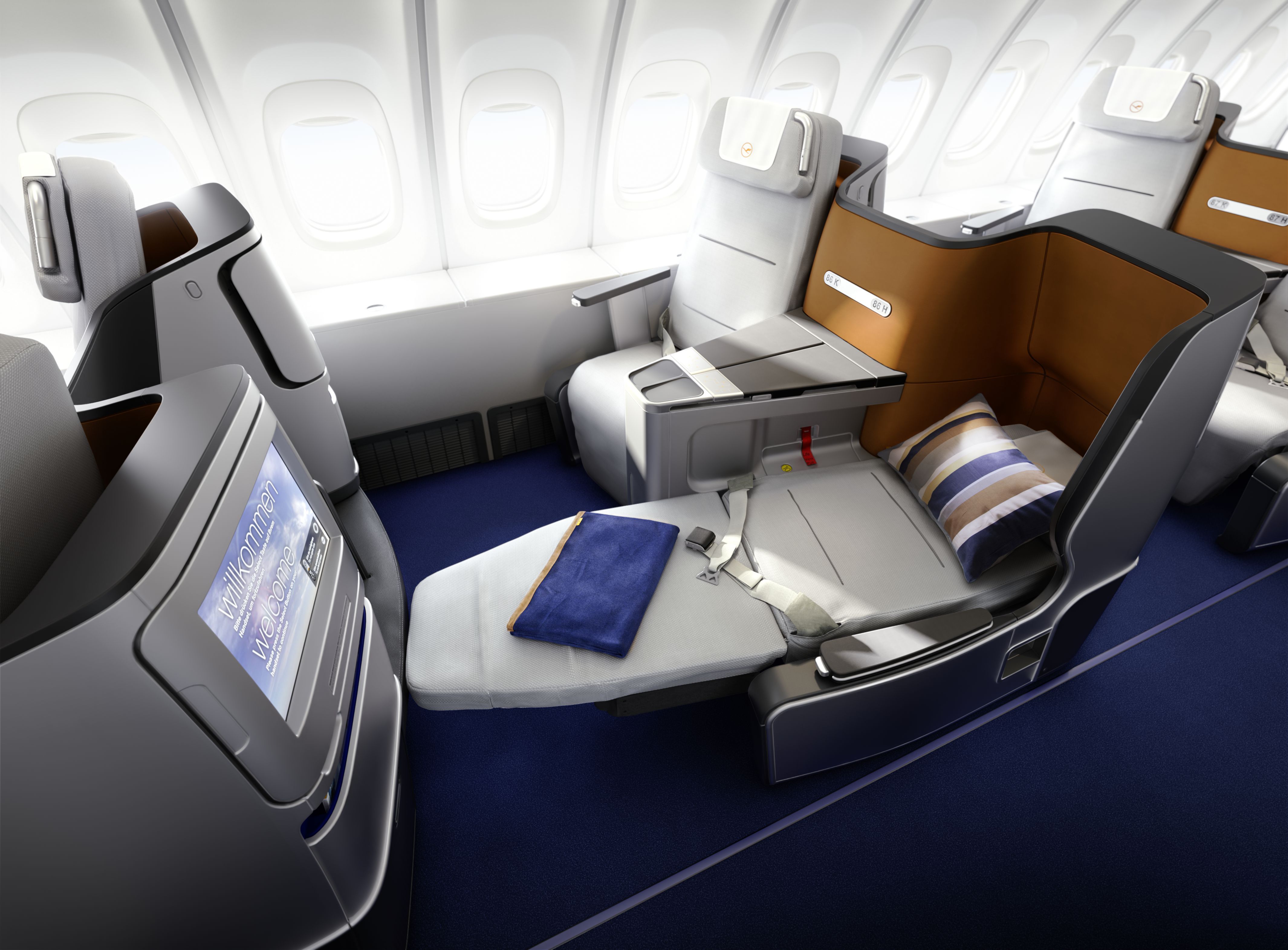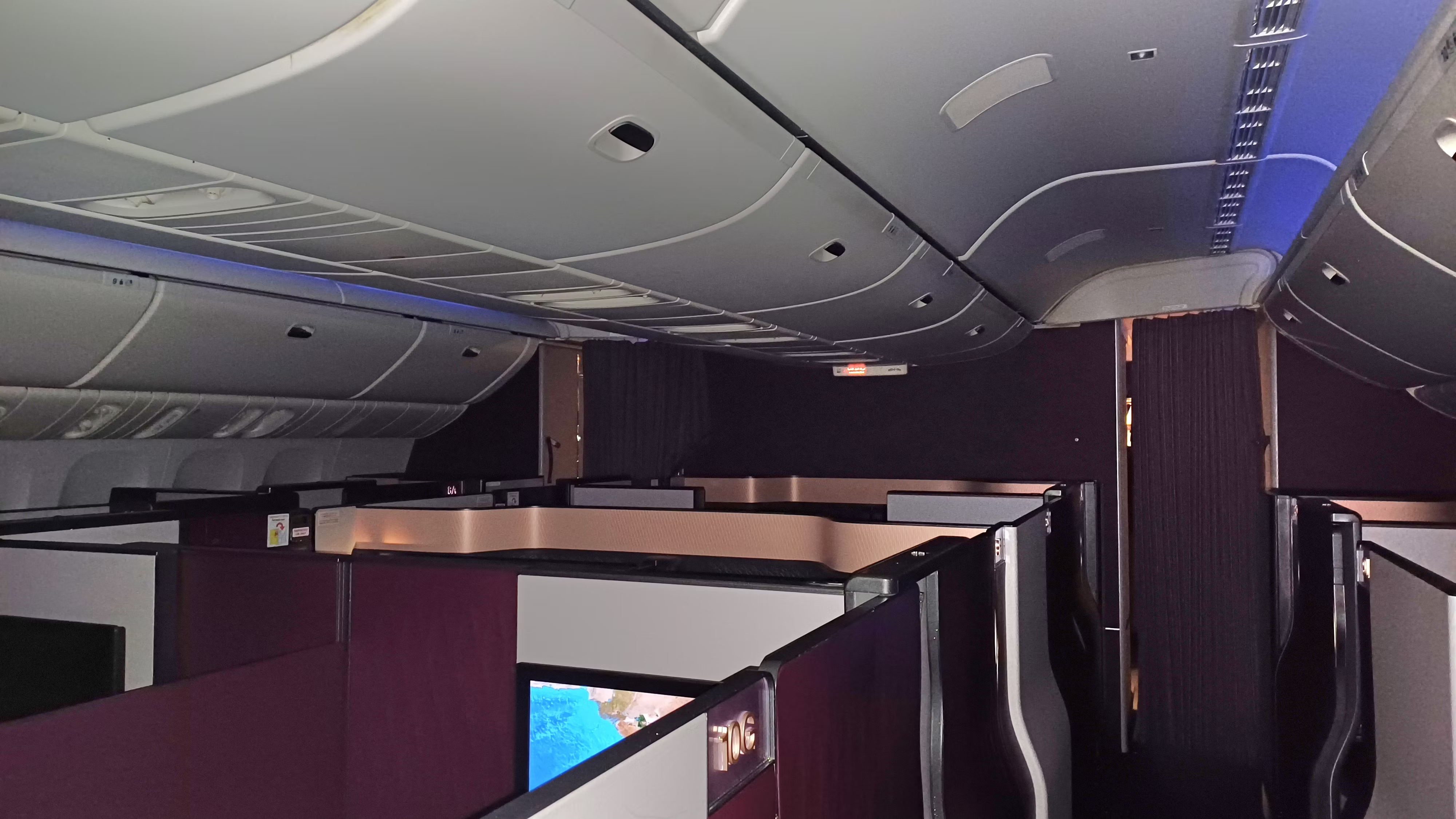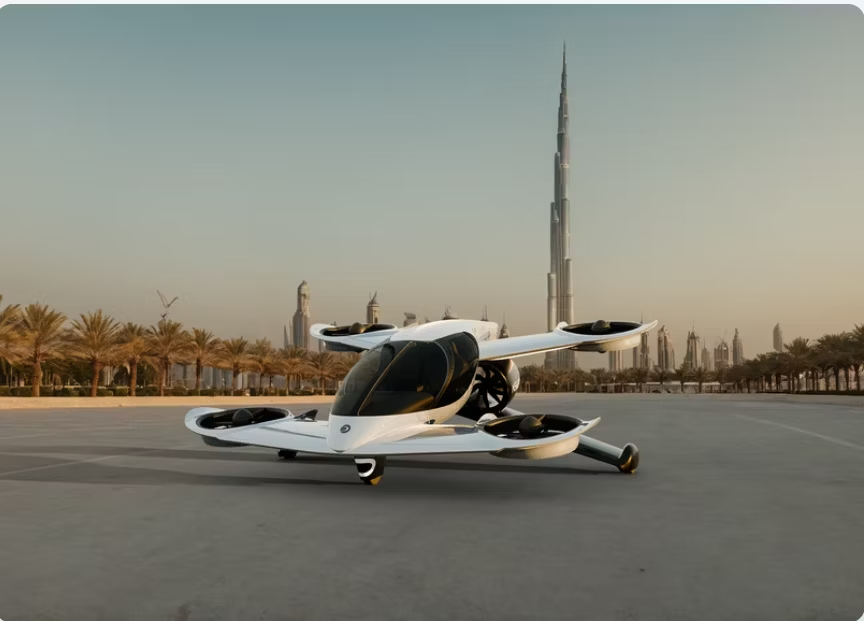Some airlines have been
offering more legroom
and charging more for these seats. Forbes even reported that Japan Airlines
was the best international airline for
spacious legroom in the economy class
.
Photo: Dillon Shah | Simple Flying
With stiff competition in the aviation industry, offering better seats is a way of attracting passengers. Modern-day aircraft seats are far more comfortable than those in the earlier decades of air travel. In this article, we will look at how airline seats have evolved.
From humble beginnings with wicker chairs to flat beds in twenty years
During the earliest days of air travel, airline seats were merely wicker chairs that were fastened to the floor. To make the seating comfortable, the chairs were lined with leather and padding. According to Air Charter Service USA, “the first passenger seat was a wicker chair on a Lawson Airliner in 1919”.
Wicker chairs were what airlines resorted to for the next decade. In 1930, the Aluminum Company of America created a light passenger seat. The seat was made from aluminum, a metal that is used to create the frame of aircraft seats to this day.
After transitioning to aluminum seats, cushions, and seat covers made their way to aircraft seating as they helped with passenger comfort. Air Charter Service USA said that from 1936, “rubber-covered foam seats became the norm” as these were introduced in the Douglas DC-3 airliner.
According to smokeongo.co.za, after the turn of the decade in the 1940s, airlines began experimenting with seats that could be converted to beds:
” From 1939 to the late ‘40s, the airlines had ambitions to make flying a luxury experience. Seats could be converted to beds for overnight flights, and seatbelts were upgraded closer to the types of buckled fabric belts we see today. Decorative details made the aircraft interior feel like a living room. These aircraft were all prop liners. Boeing’s 377 Stratocruiser from 1949 had a spiral staircase which gave passengers access to a lower deck lounge where they could stretch their legs and socialize. Drop-down beds overhead made for sleeping arrangements.”
Then, the Queen of the Skies changed the seating forever
After the end of World War II, food started being served on aircraft. However, tray tables weren’t a part of the seats then.
PJ Wilcynski, a historical researcher at Boeing, was quoted in smokeongo.co.za to have said that the Boeing 747 changed aircraft seating for good as it introduced features that are a staple diet of modern-day seats:
“It was really with the 747 that the multiplex system was introduced, with attendant call and reading light activation. It was also the system that provided the audio for the movies that you listened to, with pneumatic tubes that plugged into the armrest,”
Photo: Lufthansa
The 747 also offered an upper lounge for its first-class passengers. This was a trendsetter and a lot of airlines followed this example. The sumptuous options of onboard lounges such as those
offered on Emirates’ Airbus A380
can therefore be tracked to the Boeing 747.
What about aft-facing seats, though?
While one might have seen flight attendants on aft-facing seats, carriers don’t offer these regularly. The best examples of carriers that have offered aft-facing seats in the past include:
Aft-facing seats might make some people more prone to motion sickness. Although there’s also the added concern of passenger discomfort and anxiety, aft-facing seats are known to reduce whiplash and absorb shocks more easily. Even as far back as 1952, the Naval Aviation News had reported:
“Passengers in Navy transport planes have ten-fold better chances of coming out of crashes alive, thanks to backward-facing seats which are being installed in all new planes….The Navy has decided to install the seats after five years of development and testing showed they gave passengers much more protection for the entire back, neck, head and parts of the arms and legs in sudden stoppages”
Some airlines that currently offer some aft-facing options:
Although only a few airlines offer aft-facing seats, it will be interesting to see whether airlines will consider offering these in economy class in the future.
Mini-suites as a symbol of the “future of flying”?
One of the more recent developments in aircraft seats is the installation of mini-suites. Minis-suites aren’t quite as luxurious as first-class, but they do come with a privacy door and are more spacious than business class.
Photo: Tatenda Karuwa | Simple Flying
Mini-suites on Air China’s Airbus A350
, for example, feature privacy dividers, a Chinese-styled lamp, and the following:
- Upper stowage with uniquely crafted drawer
- Inner soft-touch backshell designed by Air China
Although these features will add weight to the aircraft, Recaro Aircraft seating told Aviation Week that the type of mini-suite installed on Air China – CL6720 – has the potential to help airlines keep their carbon footprint low, in addition to saving fuel costs.
The luxury seating on private flights
Private flights can be extremely pleasurable as the seating offered on them is some of the best in the world.
Photo: Jet Luxe
Bombardier
, cessna
, and other aircraft manufacturers have come up with private aircraft that offer the most comfortable aircraft seating, and a few other amenities. Let’s take a look at them:
-
Bombardier
Global XRS 6000 is equipped with leather sofas and flat-screen TVs.
-
Airbus A319CJ
is an aircraft adored by executives as it houses an office, lavatory, stand-up shower, and bed.
-
Dassault Falcon
7X offers queen-sized beds.
What might the seating look like in the future of flying?
The Boeing 777X
is one of the aircraft that a lot of aviation enthusiasts are excited about, as some expect it to be the future of flying. The aviation community has a keen eye on what seats on the 777x might look like.
A few companies, like
Doroni Aerospace
, have been working to establish flying cars as personal mobility vehicles. Its flying cars, such as the H1-X, among others, could even fit in a garage.
Photo: Doroni Aerospace
Flying Magazine even said that Doroni’s flying cars are expected to be “so intuitive that a 4-year-old could fly it”. Whether its seats would be comfortable enough for eighty-year-olds to sit on is something that only time will tell.

